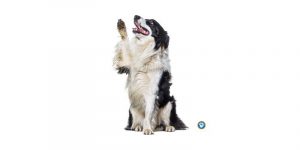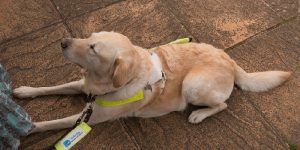Are Dogs Evolving To Fit In With Human Social Life?
In times gone by, dogs helped us hunt, guard livestock and protect dwellings. Nowadays, dogs are cherished members of the family and integral to the daily lives of people. How has the modern dog coped with these changes? If you’re want to know whether dogs are evolving to fit in with human social life, read our Holidays4Dogs article to find out more.
In just a matter of generations, the way in which we regard dogs, has changed dramatically. While once it was acceptable – and even expected – that dogs should bark at strangers, humans now prefer it if their dogs are super friendly and well-mannered with everyone.
Dogs are expected to be sociable, learn not to toilet in the house, sleep all through the night and refrain from putting muddy paws on the furniture. All alien concepts to a dog. Moreover, many dogs live sedentary lives that, many would argue, is far from species appropriate. Not only this, many dog owners have such high expectations of their four-legged companions, they expect them to have the same intelligence and social norms of people. Some would say, no wonder dogs are feeling stressed and confused.
Dog bite occurrences are on the rise. More and more public space protection orders are being put in place to control dogs in public. This must surely tell us something about how dogs are coping with these shifts? Particularly when it comes to how we expect them to live their lives in a modern human world.
New social skills.
Research as shown that, despite being a difficult task at times, dogs have managed to develop new social skills in terms of their ability to communicate with humans. In 2016 researchers from Linkoping University in Sweden, found that the social ability of dogs is affected by their genes. The scientists discovered five different genes, which influenced how dogs were able to interact with people. The academics carrying out this research, point out that dogs have adapted to life with humans over a period of thousands of years.
 The study involved 500 beagles. The dogs were presented with an impossible task of getting treats from a container they could not open.
The study involved 500 beagles. The dogs were presented with an impossible task of getting treats from a container they could not open.
The aim was to see how many dogs would seek out ‘help’ from a human, to open the container. In addition, they wanted to study the genetic make-up of the dogs, to find out if there was a genetic variant that could be attributable to certain traits – in this case, assistance-seeking behaviour.
In 2017, further research was conducted which discovered the hormone oxytocin was also involved. Oxytocin is an important hormone that plays a role in social relationships in all animals.
In the previous study, the differences in the ability of dogs to communicate with humans, was associated with variations in genetic material. Unsurprisingly, perhaps, this genetic material was located close to the gene that codes for the oxytocin receptor.
The same impossible container task was presented to a group of golden retrievers. Their oxytocin levels were increased by using a nasal spray. The dogs with the genetic variant of the receptor for oxytocin – showed more ‘help-seeking’ behaviour. Since DNA from 21 wolves was also tested, the researchers concluded that these genetic variations were present at the very beginning of dog domestication – some 15,000 years ago.
Its all in the genes.
The importance of genetics, then, seems to play an important role in the development of social skills in dogs. Many are looking to the abilities of service dogs to understand how dogs adapt and thrive, as partners with man.
In the 1950’s an experiment on the domestication of silver foxes proved that in just a few generations, the foxes changed from being aggressive and wild to friendly and domesticated. The foxes were selectively bred for tameness. Within six generations, the foxes could be picked up and petted.
Furthermore, they would whine if their caretakers left and wag their tails on their return. They even changed in appearance. Some had floppy ears and curly tails.
In addition, by generation 15, the hormone stress levels of the foxes had reduced by about half that of wild foxes. While there was some controversy about the experiments, it nevertheless, played a pivotal part in understanding the process of domestication.
Canine Partners.
Service dogs, like guide dogs or hearing dogs for the deaf, are selectively bred for specific traits. In particular, service dogs need to be friendly and calm. Not only this, they are trained to a very high level.
They are socialised carefully and are introduced to a range of situations from an early age. They are trained using positive motivational methods. Therefore, we know that careful selective breeding and sensitive training, can help dogs to live in the modern world.
Dog lovers need to change their desire for a dog that looks right, to one that is comfortable in its surroundings. Many owners choose a dog based solely on the way it looks, ignoring extreme conformation, or potential health issues.
While dogs have developed a desire to want to be with humans and have learnt to interpret cues and gestures – other things have been lost along the way. Indeed, popular dog breeds have been found to be less trainable, fearful of strangers, other dogs and have increased separation anxiety.
Final thoughts.
While the popularity of companion dogs increases and human life evolves – are we breeding dogs in a way that helps them to cope? Do we expect too much of dogs? Nowadays, the average dog has no ‘function’ other than to be a pet. Even then, many are left alone for long periods, then expected to fill the role of family companion during evenings and weekends.
They must leave behind their ingrained hunting, herding and guarding skills and learn new ones. This would be a tough task for any human being – let alone an animal. Human modern life demands more of dogs than they are prepared for – as hard as they try.
Perhaps there are many more questions than answers here. However, the lack of ethical breeding practices and trading puts animal health and welfare at risk. This we should remember if we are to continue to enjoy the companionship of the loyal dog.


